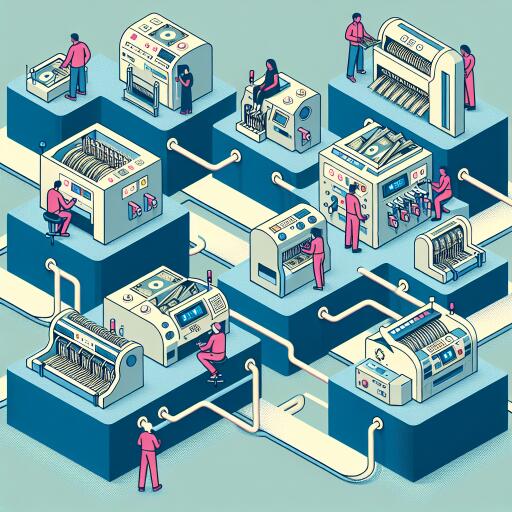Common Detector Interface for High-Speed Banknote Sorting Machines: An Overview
In the realm of high-speed banknote sorting machines (BSMs), the necessity for advanced detection techniques to identify and authenticate banknote security features has become increasingly paramount. The collaboration between the Eurosystem, major BSM suppliers, and the United States Federal Reserve System (FRS) has led to significant advancements in this area, notably through the development of the Common Detector Interface (CDI) and its successor, CDI2.
Embracing the Common Detector Interface
The inception of the Common Detector Interface in 2013 marked a pivotal moment for the integration of detectors for banknote security features into BSMs. The creation of this interface aimed to promote interoperability and minimize the complexities associated with integrating different systems. These specifications, made freely accessible to all relevant stakeholders, such as central banks, machine and detector manufacturers, received an overwhelmingly positive response from the market.
The Advent of CDI2: A Leap Forward
Building on the success of CDI, a collaborative effort between the Eurosystem and the FRS, together with key BSM suppliers, culminated in the development of CDI2. This next-generation interface extends the capacity of BSMs by incorporating advanced camera systems and more sophisticated detectors. Like its predecessor, CDI2 is designed to be an open resource, available at no cost for any interested party aiming to enhance the security feature detection capabilities of their BSMs.
Continuous Improvement and Collaboration
One of the key aspects of CDI and CDI2 is their dynamic nature, allowing for periodic revisions and enhancements. Stakeholders are encouraged to participate in this process by proposing modifications or updates to the specifications. Such proposals are then jointly reviewed by the Eurosystem and the FRS, ensuring that the advancements in detector technologies are continually incorporated into the interfaces, maintaining their relevance and effectiveness.
For suppliers keen on integrating these interfaces into their BSMs or detectors, there is a wealth of support available from the ECB and the FRS. This support ranges from the provision of acceptance test protocols to offering simulators that ensure the proper functioning of the CDI systems. However, access to these resources requires the signing of a non-disclosure agreement, safeguarding the integrity and security of the technology involved.
Conclusion
The development of the Common Detector Interface and its subsequent enhancement, CDI2, represent significant milestones in the banknote sorting industry. By fostering cooperation between central banks, machine and detector manufacturers, and other stakeholders, these initiatives have led to more efficient and secure banknote processing systems. As technologies evolve and the intricate features of banknotes become ever more sophisticated, the commitment to refining these interfaces ensures that the industry remains at the forefront of security and efficiency.
In essence, the CDI and CDI2 frameworks embody the collaborative spirit and innovative approach necessary to address the challenges of modern banknote processing. With these tools, the collective goal of enhancing the accuracy and reliability of currency sorting and authentication is steadily becoming a reality, setting a new standard for excellence in the field.
